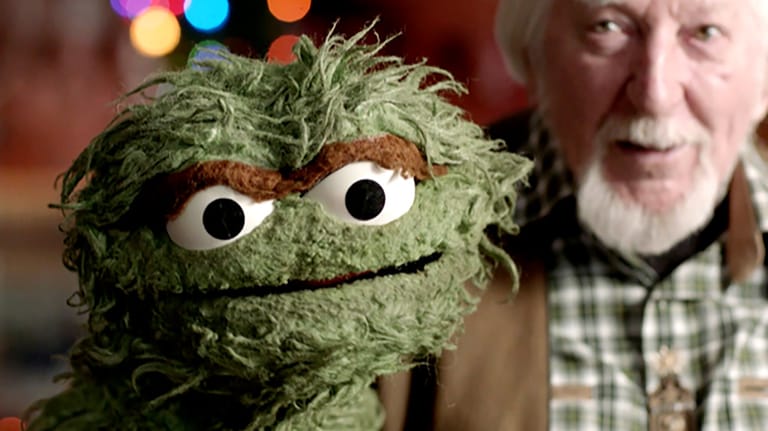The most important (and frankly, most difficult) achievement of Marilyn Agrelo's documentary "Street Gang: How We Got to Sesame Street" is to take us back to a world in which "Sesame Street" didn't exist -- an all but impossible task anymore, because it represented such a seismic shift in children's entertainment. But in the late 1960s, it was sort of inconceivable that a kids' show wouldn't talk down to its audience; the various "Howdy Doody" and "Bozo the Clown" iterations that filled the airwaves were mostly televised babysitters and/or salesmen.
That's why it's so helpful for "Mad Hot Ballroom" director Agrelo to situate this show's birth within the context of the late 1960s. The people who made "Sesame Street" what it is really were, in many ways, a bunch of hippies, working towards progressive ideas of education; the governing philosophies of the series were an outgrowth of current research and theories about social and racial inequalities in early education. When documentary producer Joan Ganz Cooney founded the Children's Television Workshop with Lloyd Morrisett, it was still wild to imagine that television could be used to teach young children. No one had really tried it before.
That sense of exploration and experimentation, of doing something new with lofty ideals and giant ambitions, is captured throughout "Street Gang": how this show was built from the ground up, with no limitations because there were no set expectations, by mixing up a behind-the-scenes stew of educators and entertainers, activists and academics. The fast-paced, hit-and-run, song-and-sketch format they landed on was certainly of its time (there's more than a little "Laugh-In" to it), but every song and every sketch had to *teach *something, demonstrably.
When "Sesame Street" debuted in November 1969, it was defined by the U.S. Department of Education -- which was originally footing the bill -- as "a nationwide TV program designed especially to help young children prepare for school." The show's creative staff, many of them escapees from the world of commercial advertising, thought of it another way; by adapting the techniques and aesthetics of that world, they were "trying to sell the alphabet to preschool children." And somehow, it worked; "No one had ever seen anything like it," Cooney says here, and she's still beaming about that.
Agrelo's documentary finds its richest material in exploring the racial dynamics at play -- this was, after all, a series specifically targeting inner-city kids, in lower-income and minority communities, so the quietly revolutionary idea of a casually integrated neighborhood, a little metropolitan utopia where everyone worked and played together, caused some controversy in Southern markets. In fact, "Sesame Street" was pulled off the air in Mississippi early in its run (there's priceless footage of the spokesman for Mississippi Educational Television squirming when asked to explain that decision), and a Jackson NBC affiliate put it on their air until the public station changed course.
"Street Gang" is filled with fascinating yet long-forgotten anecdotes like that; unsurprisingly, it's based on a deeply-researched book (by Michael Davis) which offers up something of a challenge to the oft-asked "Does this documentary do anything a good magazine piece couldn't do" question. Here, the extra dimensions and texture are added by the materials in question -- not just the old clips (which are wonderful), but archival news interviews, 16mmm behind-the-scenes footage, bloopers, outtakes, raw tapes, and the like. (There's also something wonderful about hearing from the old-school New Yawk TV guys who shot it: "I remembah thinkin', who's gonna watch this shit?")
Agrelo assembles an impressive assortment of the original participants -- Cooney and Morissett, head writer Norman Stiles, cast members like Roscoe Orman and Sonia Manzano, a late-in-life interview with the great Caroll Spinney (of whom Manzano says, "With Big Bird and Oscar the Grouch, I think Carroll saved a lot of money on therapy"), and composer Chris Cerf -- along with well-selected archival interviews with composer Joe Raposo, Muppet master Jim Henson, and Jon Stone, the writer and director who is deemed, with considerable evidence, "the soul of that show." It's always a treat to learn more about Henson (the film throws in some great, weird old commercials and late night TV footage), but in many ways, "Street Gang" functions most of all as a heartfelt tribute to Stone's talent and contributions, which he felt (perhaps justifiably) that he was denied at the time.
The film digs into big moments in the show's history with intelligence and emotion, particularly the death of Will Lee -- and the corresponding onscreen passing of Mr. Hooper -- in 1982 (the sequence of Big Bird trying to understand that death remains achingly heavy and heartbreaking), and the death of Henson in 1990. There are also some unfortunate exclusions (the sharp shift in the original concept of Mr. Snuffleupagus, for example), and by focusing solely on the early years and development, some big characters get left out (there is, by my count, a single, fleeting glimpse of Elmo). These seem necessary allowances for time; here we have a rare documentary film that seems to have enough material for a docu-series, when the opposite has become the norm.
"Street Gang" ultimately focuses on the correct subject: the artists and educators who made "Sesame Street," and how much of its power and influence seems an outgrowth of the unique chemistry created by those specific people, at that specific moment. Throughout the film, I was startled by sketches and songs I haven't seen or heard in decades, yet their words and melodies all come right back into my mind, fully intact -- because for so many of us, they're permanently lodged in our subconscious. We take "Sesame Street" for granted now, because it's become such a part of the fabric of culture and influenced so much of what came after, but before 1969 there really was nothing like this in children's television. And, it could be argued, there has been nothing quite like it since.












